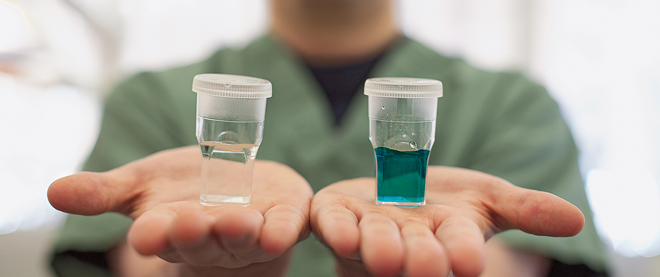Painless gum disease testing
A new rinse test identifies gum disease by measuring the amount of white blood cells in the mouth
Photograph by Andrew Tolson
Share

“Rinse and spit” is a routine part of a trip to the dentist. But a University of Toronto researcher is turning the exercise into a tool to diagnose gum disease early and painlessly.
Typically, dentists detect the disease by running a metal probe underneath the gums, which can be uncomfortable and only catches it once damage has occurred. This rinse test, invented by Dr. Michael Glogauer, an immunologist, oral biologist and periodontist, identifies gum disease by measuring the amount of white blood cells—which indicate infection—present in the mouth.
After swishing water for 20 seconds, the patient spits into a cup; a dental professional adds in two drops of a chemical, and within a minute the water turns blue if disease is detected. “The degree of blueness tells you the severity,” says Glogauer, who is working to bring the test to market in Canada and the United States.
Diagnosing gum disease early is important for overall well-being. It has been associated with increased risk of diabetes, stroke, cardiovascular disease and low-birth-weight babies. “It’s not just about losing your teeth,” says Glogauer. “It’s about causing damage to the rest of your body.”